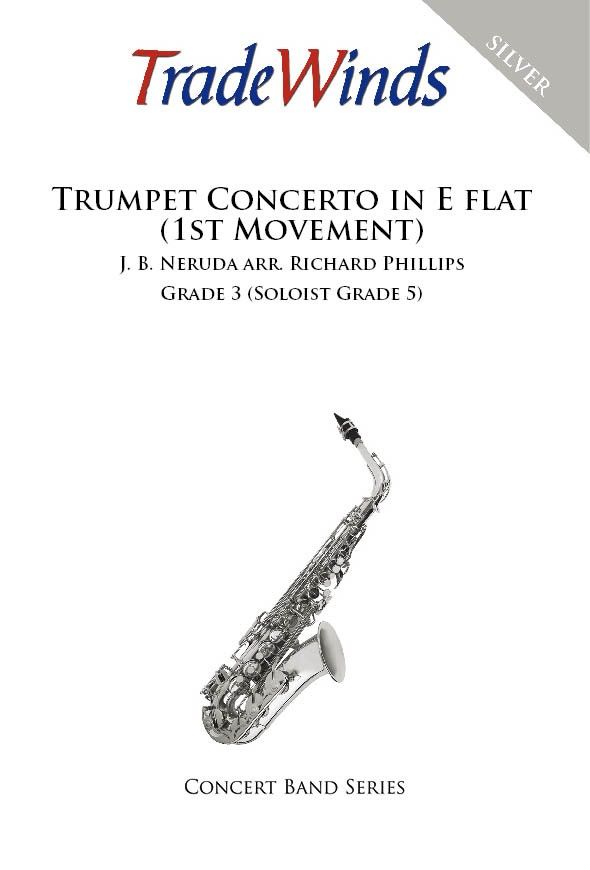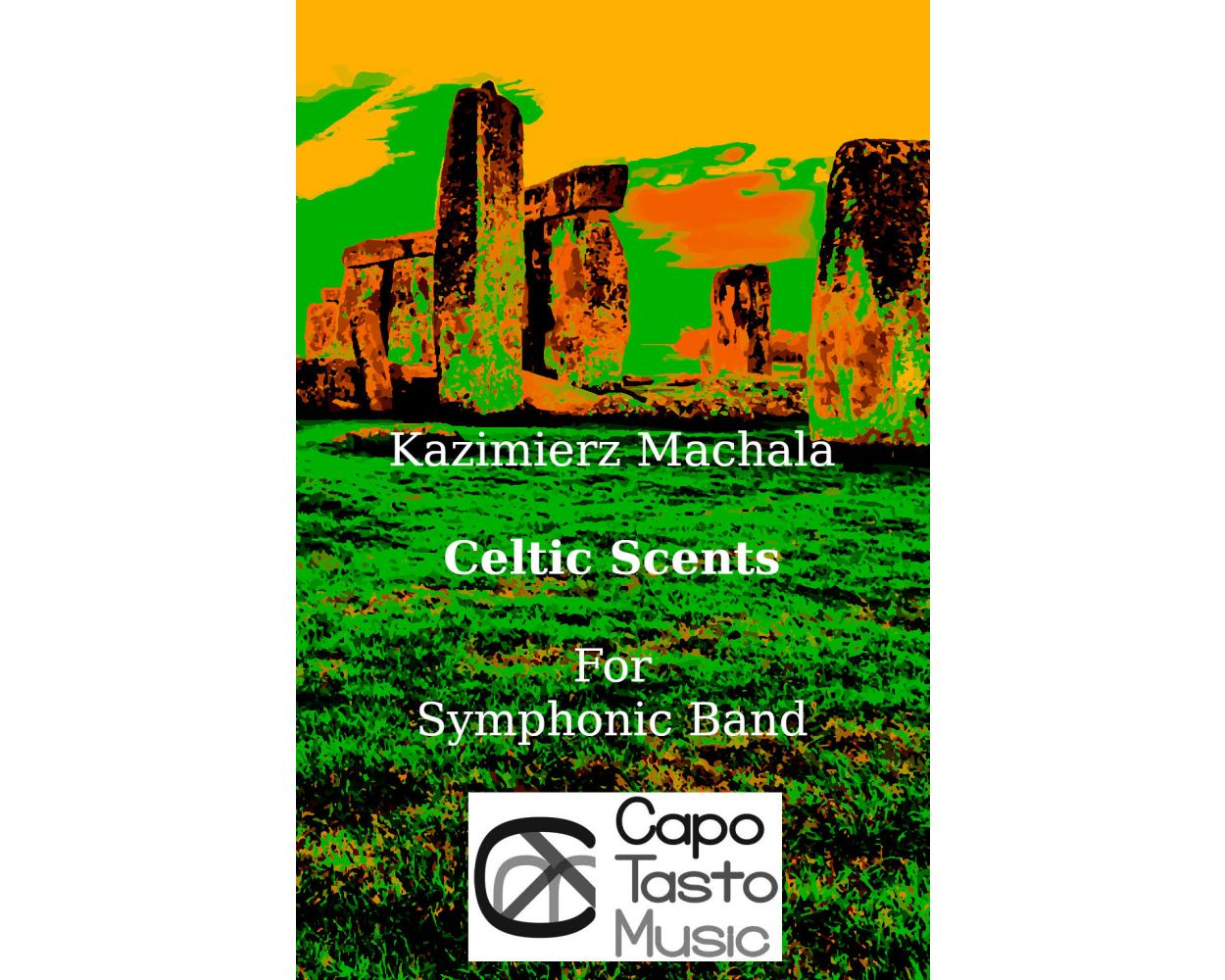Results
-
£86.00
Abendlied (CB) - Josef Rheinberger - Pierre-Antoine Savoyat
Abendlied (Evening song) is a sacred motet by Josef Rheinberger for a six-part mixed choir. He wrote the first version in 1855 at the age of 15. It is perhaps his most famous choral work, which looks backward to the great sacred music of the Renaissance.
Estimated dispatch 7-14 working days
-
£88.00
The Old Circus Band (CB) - Fred Jewell - Bert Van Thienen
The 1922 march The Old Circus Band is a fine glance back to the earlier days of circus music. Written by the outstanding circus composer and bandleader Frederick Alton Jewell (1875-1936) while he was director of the Iowa Brigade Band in Oskaloosa. One of Jewell's top jewels, a screamer!
Estimated dispatch 7-14 working days
-
£113.00
Stations of the Cross (CB) - Dominique Fonteyn
Stations of the Cross tells the story of a real tragedy. In the dramatic opening, we hear the euphonium announce the bad news. The character is trying to process all but doesn't succeed, lots of emotions result in a lament. An inner conflict arises between the emotional and the rational. Over time, he manages himself to take back control but events keep him bother. This is reflected by the continued drums until we suddenly arrive in the lento abbandono. We are witnessing a redemptive event and the grandioso that follows reflects a lot of happiness. Life can finally go on.
Estimated dispatch 7-14 working days
-
£93.00
The Rocky Road to Dublin (CB) - Irish Traditional - Patrick Verhaegen
The Rocky Road to Dublin is a fast-paced 19th century Irish song about a man's experiences as he travels to Liverpool (England) from his home in Tuam (Ireland). The words were written by D.K. Gavan.
Estimated dispatch 7-14 working days
-
 £44.95
£44.95Trumpet Concerto in E Flat (1st Movement)
Composer: J. B. NerudaDuration: 6:00Series: Silver TradeWinds Concert Band SeriesGrade/Difficulty: 28Arranger: Richard PhillipsJohan Baptist Georg Neruda was a classical composer born in Bohemia which is now part of the Czech Republic. Very little is known about this composer other than he had a good reputation as a violinist and conductor in Prague and Germany and became the Konzertmeister of the Dresden Court Orchestra.
Estimated dispatch 7-14 working days
-
 £79.00
£79.00Molly Pitcher
This piece is part of The American Legends series and tells the story of Molly Pitcher, a woman who took over her husband's cannon crew duties during the American Revolution after he was injured in battle. The music includes themes representing both the British and Continental forces, with a dramatic shift as Molly steps in to continue the fight, culminating in a powerful conclusion. Performance suggestions include using traditional snare drums and cannon sound effects.
Estimated dispatch 12-14 working days
-
 £64.00
£64.00Celebration of Peace
Celebration of Peace is a fantasy on Oseh Shalom (He Who Makes Peace), a traditional Hebrew song. This lively arrangement uses mixed meter, tempo changes, syncopation, and instrumental textures to portray the jubilant dance.
Estimated dispatch 12-14 working days
-
 £71.00
£71.00Steel Driving Man
This piece is based on the legend of John Henry. Despite being considered folklore, John Henry appears to be based on a true story of a powerful steel driving man who was part of an 1800's railroad tunneling crew. The music depicts the intensity and exertion of a legendary contest between John Henry and a new steam powered machine, which he ultimately won. A three-note motif represents Henry as the music moves through dramatic character and tempo changes, including a moment for the entire band to sing!
Estimated dispatch 12-14 working days
-
 £198.00
£198.00Celtic Scents - Kazimierz Machala
Celtic Scents is an amazing suite of wonderful musical scents (wildflowers, herbs, and trees) unified by the brilliant imagination of world-renowned teacher, performer and composer Kazimierz Machala, and the familiar sounds of Celtic folk music. This completely original work of seven movements is reminiscent of Grainger's Lincolnshire Posy, including a very creative and enjoyable harmonic palette. The composition requires a full wind band and takes advantage of colorful orchestration to link each movement more closely to the scent it represents. While Machala composed Celtic Scents originally for orchestra, he has carefully and artistically re-orchestrated the work for the modern wind band. Celtic Scents will best suit performances by collegiate and professional wind bands around the world due to the advanced technical and musical requirements. There is absolutely no doubt that audiences and performers will enjoy their time spent with this joyful and engaging composition.
Estimated dispatch 12-14 working days
-
 £40.00
£40.00Belvidere Park - Andy Bruhn
Belvidere Parkinvites listeners to take in the beauty and majesty of Belvidere Park in Belvidere, Illinois. Composer Andrew Bruhn was inspired by the morning bike rides he often took with his eldest daughter through the park. Belvidere Park provides a great opportunity for young students to work on their pitch and tone quality. Band directors (and the audience) will be pleased with how lush and full their beginning band sounds performing this accessible piece.
Estimated dispatch 12-14 working days
